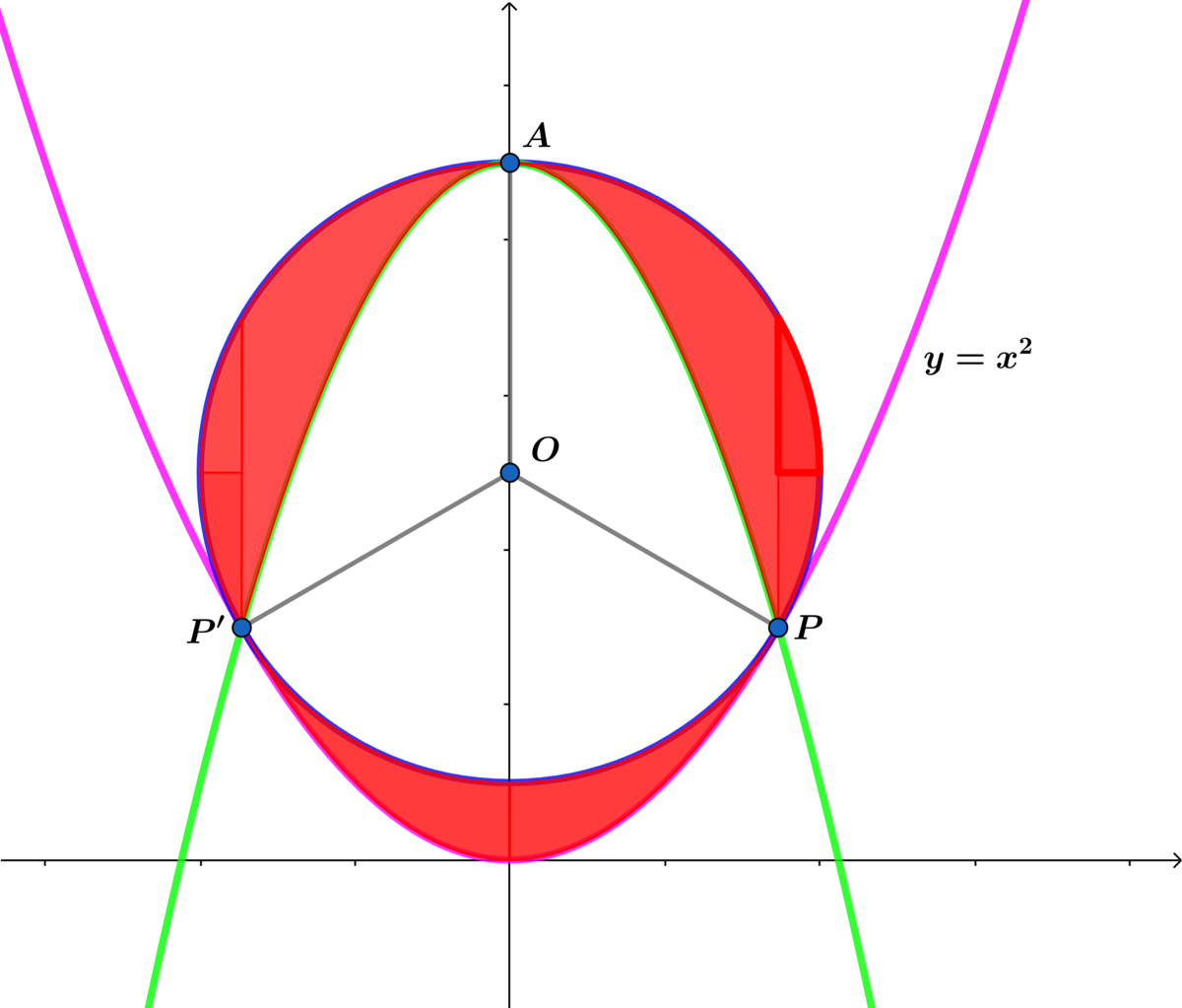Inscribed Circles!

The pink parabola is tangent to a circle with radius at points and as shown above and the green parabola intersects the circle at points and .
Find the area of the red shaded region above.
The answer is 1.04719755.
This section requires Javascript.
You are seeing this because something didn't load right. We suggest you, (a) try
refreshing the page, (b) enabling javascript if it is disabled on your browser and,
finally, (c)
loading the
non-javascript version of this page
. We're sorry about the hassle.
D = d 2 = x 2 + ( x 2 − y 0 ) 2 ⟹ d x d D = x ( 2 x 2 − ( 2 y 0 − 1 ) ) = 0 ⟹
x = ± 2 2 y 0 − 1 ⟹ 2 2 y 0 − 1 + ( 2 2 y 0 − 1 − y 0 ) 2 = 1
⟹ 2 2 y 0 − 1 = 4 3 ⟹ y 0 = 4 5 ⟹ A : ( 0 , 4 9 ) and x = ± 2 3
⟹ P : ( 2 3 , 0 ) and P ′ : ( − 2 3 , 0 ) .
Let y = a x 2 + b x + c ⟹ c = 4 9
and
− 2 3 = 4 3 a + 2 3 b
− 2 3 = 4 3 a − 2 3 b
⟹ a = − 2 and b = 0 ⟹ y = − 2 x 2 + 4 9
I = 2 ∫ 0 2 3 ( − 2 x 2 + 4 9 ) − ( 4 5 − 1 − x 2 ) d x =
2 ∫ 0 2 3 ( − 2 x 2 + 1 + 1 − x 2 ) d x .
Letting x = sin ( θ ) ⟹ d x = cos ( θ ) ⟹
I = 2 ( ( − 3 2 x 3 + x ) ∣ 0 2 3 + ( 2 1 ( θ + 2 1 sin ( 2 θ ) ) ) ∣ 0 3 π ) =
2 ( 8 3 3 + 6 π ) = 4 3 3 + 3 π
⟹ A 1 = π − I = 3 2 π − 4 3 3
For A 2 = 2 ∫ 0 2 3 ( ( 4 5 − 1 − x 2 ) − x 2 ) d x =
2 ∫ 0 2 3 ( 4 5 − x 2 − 1 − x 2 ) d x
Letting x = sin ( θ ) ⟹ d x = cos ( θ ) ⟹
A 2 = 2 ( 4 5 x − 3 x 3 ∣ 0 2 3 − 2 1 ( θ + 2 1 sin ( 2 θ ) ) ∣ 0 3 π ) =
2 ( 4 8 3 − 8 3 − 6 π ) = 4 3 3 − 3 π
A 2 = 4 3 3 − 3 π
⟹ the desired area A = A 1 + A 2 = 3 π ≈ 1 . 0 4 7 1 9 7 5 5